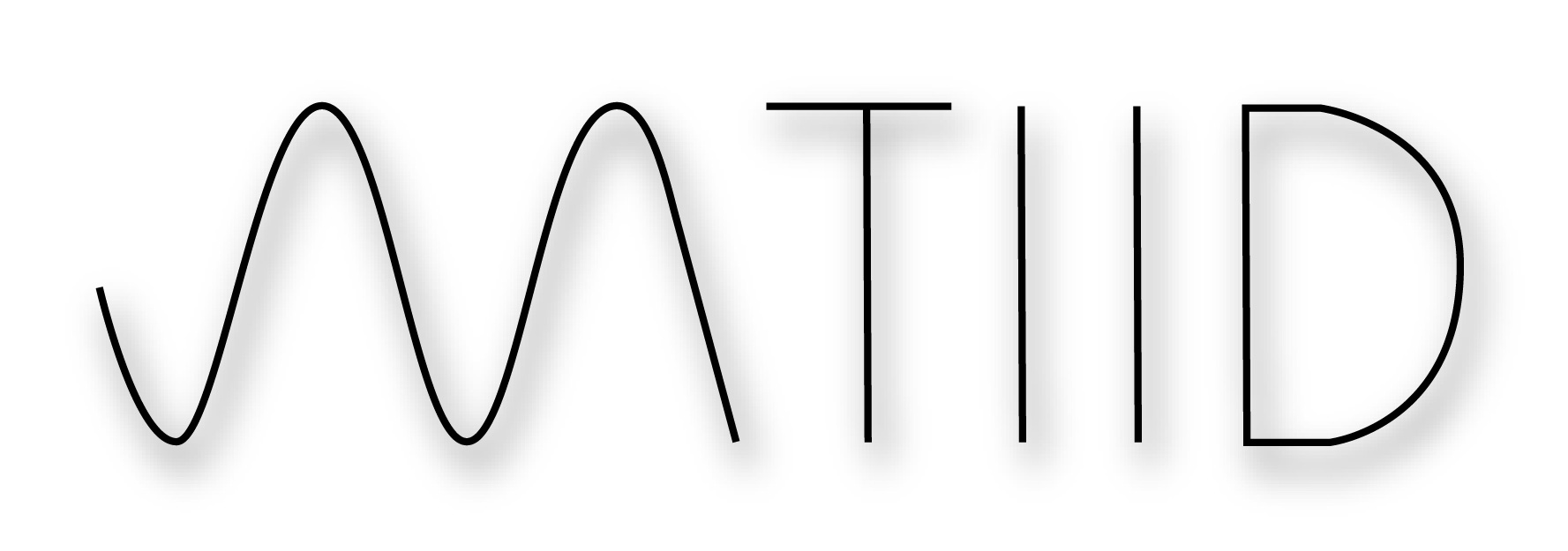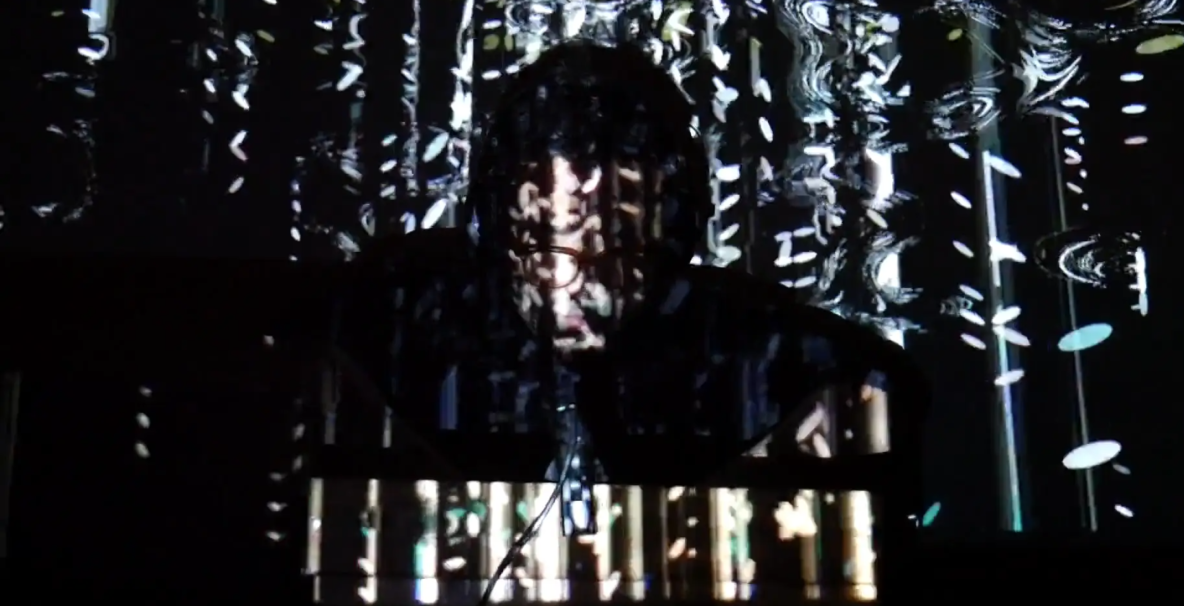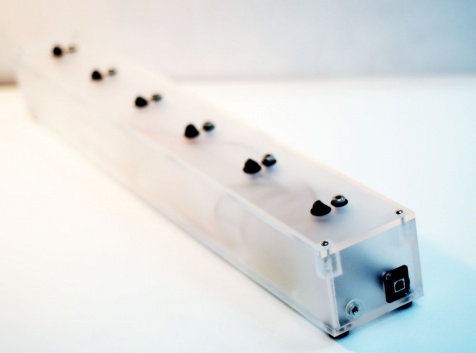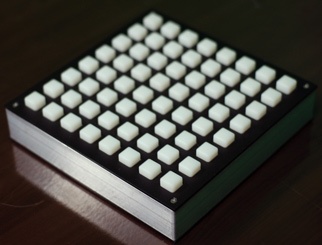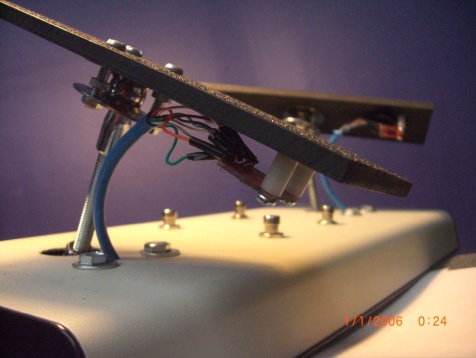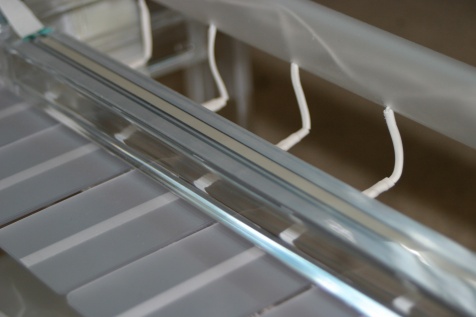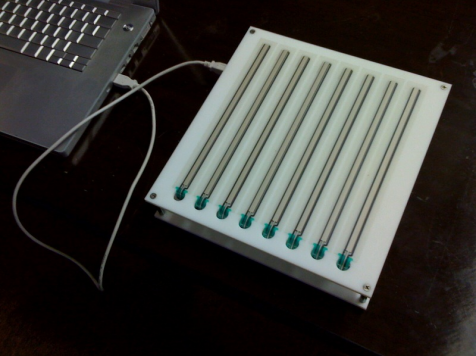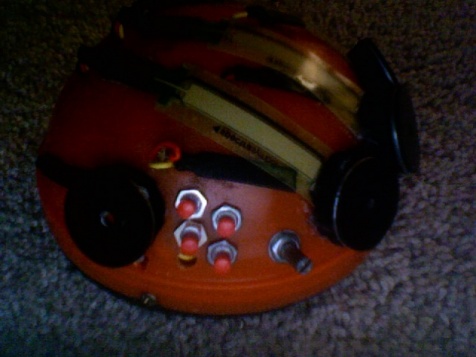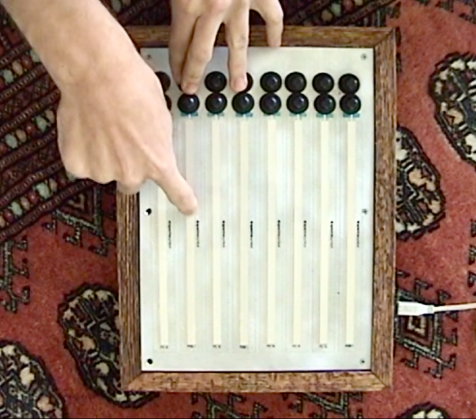Kai Luen Liang Grains is a music interface made from a box of rice and custom electronics. It is both a sound object and way of controlling the sound it creates. The sound of the rice is recorded in real time and then processed by the pressure of the rice against the box. Both the sound and the input data of the …
The Multi-Laser Gestural Controller
The Multi-Laser Gestural Controller James Meason Wiley The Multi-Laser Gestural Controller is a newly developed musical controller which uses reflective laser light to send control messages that can be used to create music and control live video. Control messages can be created by breaking the laser light with the hand (on/off), or by moving the hand up and down within …
The Arduinome
Owen Vallis & Jordan Hochenbaum Developed in 2005 by CalArts Alum Brian Crabtree, the original Monome has become of the most widely used, open-source computer music controllers of all time. In 2008, Jordan and Owen set out to create a software-compatible clone of the Monome using the Arduino Microcontroller. A cheaper alternative to the typically expensive Monome, there are over …
Argos Interface Builder
Dimitri Diakopoulos Argos is a drag-and-drop GUI builder built in openFrameworks, a framework for fully cross-platform creative coding. Argos deals specifically with creating musically oriented interfaces for composition and live performance. The application was originally an open-source, 2009 student project for the Google Summer of Code under the supervision of the NUI Group.
Funk Machine
Funk Machine Duncan Woodbury, John Aspinall The Funk Machine is a system of two three-axis foot pedals that can be openly assigned to any parameter either through the use of MIDI or OSC. There is also a series of 4 stomp-buttons that can be utilized to switch through presets as well as manage and control accompanying audio or musical robotics. …
Flexichord
Flexichord Jason Jahnke The interface is called the flexichord, in reference to the harpsichord. It’s keyboard-like in the arrangment of its triggers (a linear row). Comprised almost entirely of acrylic, it alternates between transparent (crystal clear) and translucent (frosted) with a few appointments being opaque white. Twelve bend sensors are used, enabling a chromatic scale to be played, for the …
FaderBox
Steve Rusch The FaderBox is eight membrane potentiometers mounted on a square plexy box. This is a very simple yet useful tool. It gives analogous control to the realm of computers. It was inspired by the Monome, which is the opposite of the FaderBox. The Monome only has buttons which gives on and off. The FaderBox is continuous control, which …
B.O.I.N.G
B.O.I.N.G Chris Adams, Jordan Woods-Wahl BOING, the Body Oriented Interface ‘n Gymnastics Instrument, is a musical trampoline that combines aerobics with musicianship. We have built a sensor framework onto the trampoline using stretch sensors, wires, resistors, & the Arduino micro-controller. One end of the sensor is connected to the pad. The other is attached to the frame using an insulated …
Hand In Hand
Rodrigo Restrepo This interface is a small, handy controller, that allows extensive use of the fingers and hand, keeping in mind that those are ones of the more developed and skilled parts of the human body. Different sensors were combined and arranged in a small area of a curved surface. A curved surface was chosen because having in mind that …
Castro
Carl BurginThe Castro is a musical computer interface designed to give the user the flexible continuous control without loosing utility and portability. It is an instrument designed for the performer concerned more with precise musical control rather than theatrics but depending on it use, can be a very engaging live performance tool. The Castro consists of eight membrane potentiometers touch …
